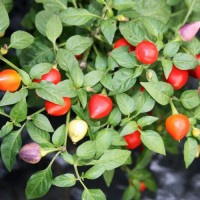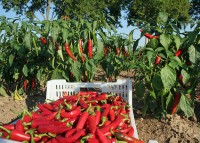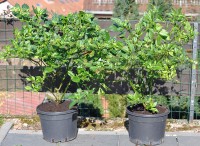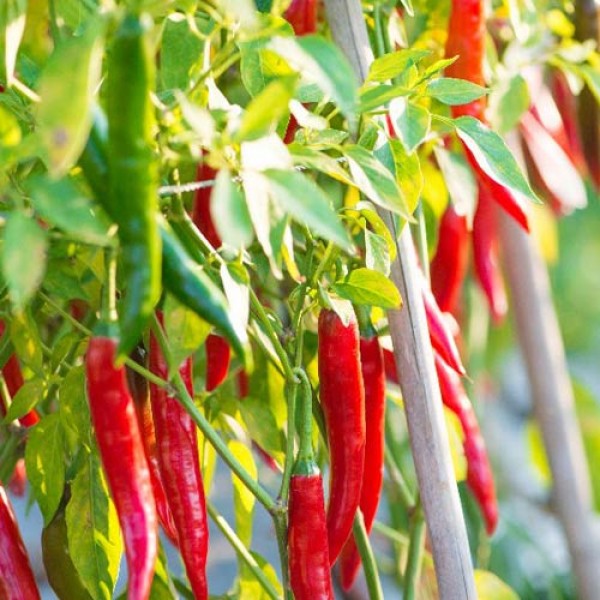
How to fertilise chillies
What fertiliser do chilli plants need and how much?
Chilli and bell pepper plants (all Capsicum species) are heavy feeders, which means they should be fertilised regularly.
But how do you fertilise chillies properly?
From May onwards, the chilli plants can be put outdoors, which is also the time when they should be moved into a large (at least 10 litre) pot.
It is important that the chillies get a good plant soil right from the start, mixed well with horn meal and plant pellets. Horn meal is a pure nitrogen fertiliser (N), which mainly ensures the size growth of the plants and good leaf development. Plant pellets are a green manure and an NPK fertiliser that also provides the other important plant nutrients phosphorus (P) and potassium (K). Phosphorus and potassium in particular are important for healthy fruit development. Good mixing into the soil is essential, as the nutrients are not immediately available, but first have to be broken down by the soil micro-organisms and are thus available with a time delay.
After that, the plants need a dose of liquid fertiliser about every 2 weeks. As soon as the first fruits form, even weekly. The liquid fertiliser contains a balanced spectrum of nutrients with NPK as well as sulphur, calcium and the trace elements iron, manganese, copper, magnesium and boron. When giving liquid fertiliser, it is important to dilute it with the watering water, otherwise the strong concentration of nutrients can damage the fine roots.
A little tip:
In general, you should water chilli plants daily when temperatures are high. The soil should remain evenly slightly moist, but avoid waterlogging by all means. Daily watering stimulates rapid growth of the plant. As soon as the first flowers appear (the plant should already have reached 60% of its final size), watering can be skipped for 2-3 days. This stimulates the chilli plant to produce many new flowers.
It is very important to use a saucer so that the valuable nutrients are not washed out and seep into the soil when watering.
Plant stage and fertiliser application
| Month | Plant stage | Fertiliser |
|---|---|---|
| May | Plant out in (at least) 10 litre pot | Add approx. 1 handful each of horn meal and plant pellets to soil, mix well |
| June | Size growth, leaf development, first flowers | Liquid fertiliser every 14 days with irrigation water |
| from July | Fruiting | Liquid fertiliser once a week with irrigation water |
Basically, the different chilli varieties set fruit at different times. For example, jalapenos can often be harvested as early as July, while habaneros take their time until September.
Different plant nutrients and their function in fertiliser
| Plant Nutrient | Function |
|---|---|
| Nitrogen (N) | Stimulates the growth of leaves and all green parts of the plant. |
| Phosphorus (P) | Supports the development of flowers, fruits and seeds |
| Potassium (K) | Ensures a stable plant structure and supports flower and fruit health |
| Magnesium (Mg) | Important component of chlorophyll (leaf green) and therefore essential for good photosynthesis and energy production from sunlight. |
| Calcium (Ca) | Influences the pH-value of the soil, counteracts over-acidification and makes the soil loose. |
| Iron (Fe) | Important component of chlorophyll (leaf green) and therefore essential for good photosynthesis and energy production from sunlight. |


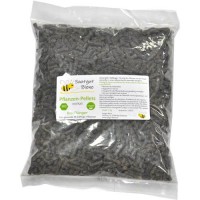
 Nettle Liquid Manure
Nettle Liquid Manure 
